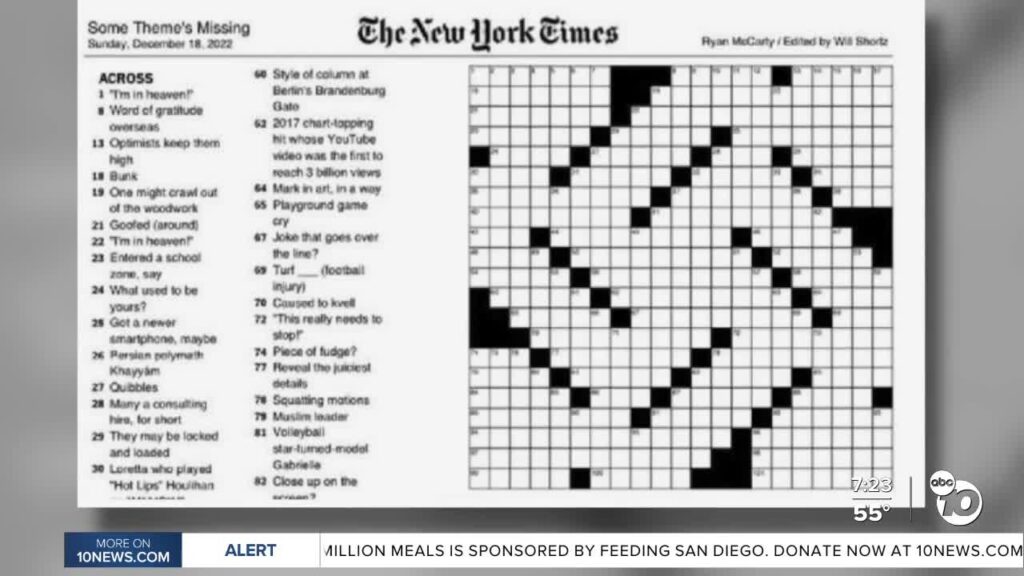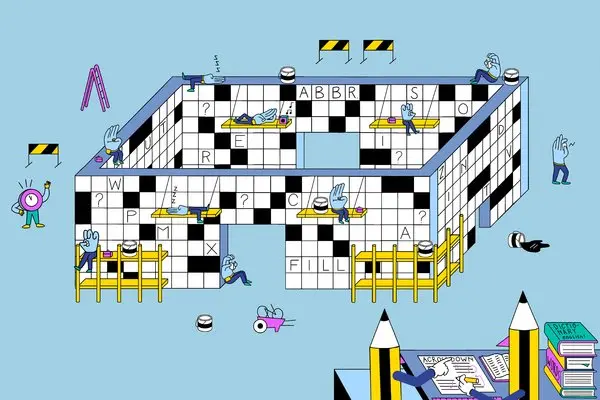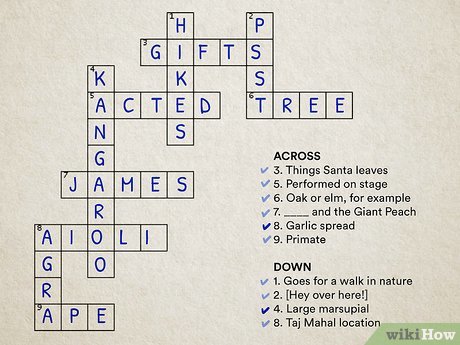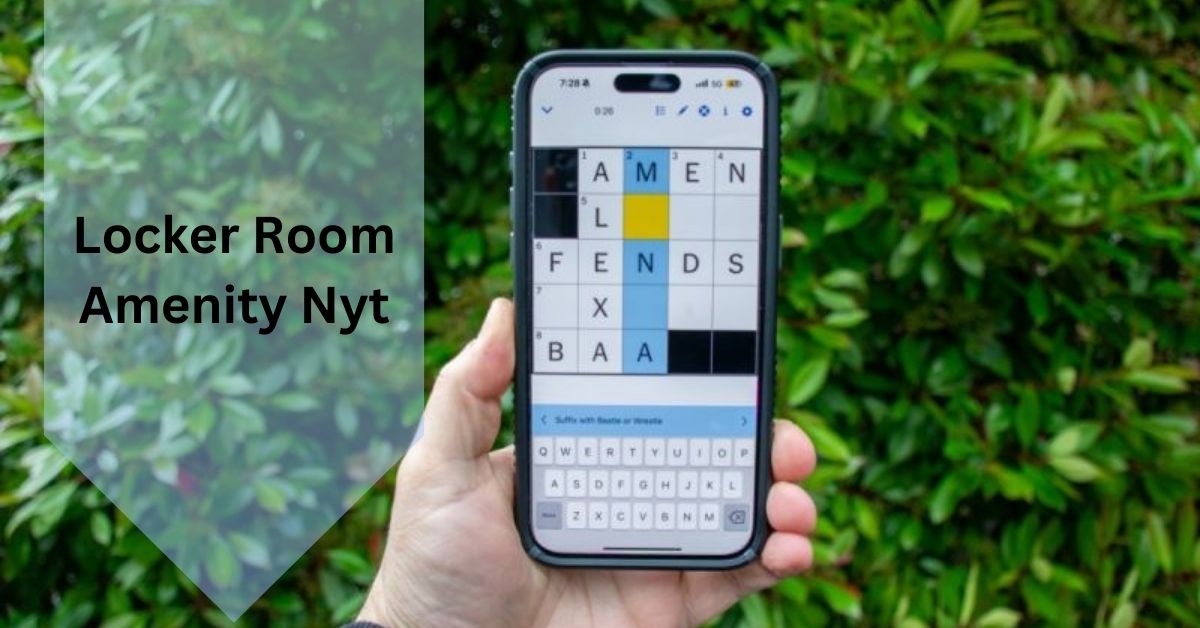Locker Room Amenity Nyt – Unpacking The Clues!
The New York Times (NYT) Crossword is an iconic puzzle that has challenged and entertained millions of enthusiasts since its inception in 1942. Among the many clues that puzzle solvers encounter, one that often stirs curiosity is “Locker Room Amenity.” This clue is a fascinating example of how everyday items or concepts are transformed into challenging riddles that require not just knowledge, but also lateral thinking and wordplay skills.
This article delves into the significance of the “Locker Room Amenity” clue, explores how crossword clues are constructed, and provides insights into the broader world of crossword puzzles.
The Appeal of the New York Times Crossword:

A Brief History
The New York Times Crossword is a daily feature that has become synonymous with intellectual challenge and cultural relevance. Created by Arthur Wynne, the crossword was first introduced in the early 20th century and has since evolved into a complex art form. Will Shortz, the current editor, has been at the helm since 1993, maintaining the crossword’s reputation for wit and difficulty.
Why People Love the NYT Crossword
The NYT Crossword appeals to a broad audience because it combines language, culture, and logic in a way that is both challenging and rewarding. Solvers enjoy the mental exercise, the satisfaction of completing a puzzle, and the sense of community among crossword enthusiasts. The puzzle’s ability to stay relevant by incorporating contemporary references and fresh themes adds to its enduring popularity.
Decoding the “Locker Room Amenity” Clue:
What is a “Locker Room Amenity”?
In a literal sense, a “Locker Room Amenity” refers to an item or feature typically found in a locker room that enhances convenience or comfort. This could include towels, showers, benches, or even items like soap and hair dryers. However, in the context of a crossword puzzle, the clue could have a more abstract or playful interpretation, depending on the crossword constructor’s intent.
Common Answers to “Locker Room Amenity”
Over the years, “Locker Room Amenity” has appeared in various crossword puzzles with different answers. Some of the most common answers include:
- TOWEL: A simple yet essential amenity in any locker room.
- SOAP: A standard offering in shower areas of locker rooms.
- SAUNA: An amenity often found in high-end gyms and locker rooms.
- BENCH: A piece of furniture that is commonplace in locker rooms.
- SHOWER: A facility provided in most locker rooms.
These answers highlight how crossword clues can range from straightforward to slightly ambiguous, depending on the level of difficulty intended by the puzzle maker.
Also Read: Skşi – Your Ultimate Guide to Local Attractions and Deals!
Understanding Crossword Clues
Crossword clues often involve wordplay, puns, abbreviations, or double meanings, which adds layers of complexity to what might initially seem like a simple hint. For instance, the clue “Locker Room Amenity” might have a direct answer like “TOWEL,” but it could also lead to something more abstract, such as “PRIVACY” in a more creatively constructed puzzle.
The Role of Synonyms and Wordplay
In crossword puzzles, synonyms play a significant role. Constructors often use words or phrases that are synonymous with the answer but are not immediately obvious. Wordplay, such as anagrams, homophones, or double entendres, is also common. For instance, a clue like “Locker Room Amenity” could also hint at something metaphorical or less tangible, such as “EGO” or “RESPECT,” depending on the puzzle’s theme.
Crafting Crossword Clues: The Constructor’s Perspective

The Art of Clue Writing
Constructing crossword clues is an art form that requires a deep understanding of language, culture, and human psychology. Puzzle constructors aim to create clues that are challenging but fair, ensuring that solvers can arrive at the answer through reasoning, not just guesswork. A well-crafted clue often has multiple layers, inviting solvers to think outside the box.
Themes and Patterns in Clue Writing
Many crossword puzzles are themed, meaning that a set of clues and their corresponding answers are related by a common thread. This theme might be a play on words, a pun, or a cultural reference. For example, a crossword puzzle might have a theme centered around “Gym Etiquette,” with clues like “Locker Room Amenity” fitting into the broader theme of gym-related terms.
The Challenge of Balancing Difficulty
One of the key challenges for crossword constructors is balancing difficulty. A clue like “Locker Room Amenity” could be made easy with a straightforward answer like “TOWEL,” or it could be more challenging if the answer is something less obvious. Constructors must gauge the expected knowledge level of their audience and decide how much misdirection to include in their clues.
Also Read: www socceragency.net media – Discover Soccer News!
The Broader World of Crossword Puzzles:
The NYT Crossword’s Influence on Popular Culture
The New York Times Crossword has had a significant impact on popular culture. It is referenced in movies, TV shows, and literature, often as a symbol of intelligence and wit. Famous personalities, including celebrities and politicians, have professed their love for the NYT Crossword, further cementing its status as a cultural icon.
Crossword Puzzles as a Cognitive Exercise
Solving crossword puzzles is more than just a pastime; it is a cognitive exercise that can help maintain mental acuity. Studies have shown that regularly engaging in activities like crossword puzzles can improve vocabulary, memory, and problem-solving skills. The challenge of decoding clues like “Locker Room Amenity” is not just fun—it’s also beneficial for brain health.
The Rise of Online and Digital Crossword Puzzles
While the New York Times Crossword began as a print-only feature, it has since adapted to the digital age. Today, solvers can access the NYT Crossword online or through mobile apps, allowing them to enjoy puzzles anywhere, anytime. This digital shift has also introduced features like hints, timers, and social sharing, making the experience more interactive and engaging.
Strategies for Solving Crossword Puzzles:

Start with the Easy Clues
One effective strategy for solving crossword puzzles is to start with the easiest clues first. Filling in the obvious answers can provide a framework that makes the more difficult clues easier to solve. For example, if you know that “Locker Room Amenity” is likely to be “TOWEL,” filling in that answer might help you solve intersecting clues.
Look for Word Patterns
As you solve more of the puzzle, patterns in the letters will begin to emerge. These patterns can help you guess the answers to the remaining clues. Crossword puzzles often feature common letter combinations and prefixes/suffixes, which can serve as clues to the solution.
Use the Theme to Your Advantage
If the puzzle has a theme, use it to guide your answers. Themed puzzles often have answers that are related to each other, so understanding the theme can give you a significant advantage in solving the puzzle. For instance, if the theme is “Gym Equipment,” and you’ve already solved “TREADMILL” for one clue, “Locker Room Amenity” might logically lead to something like “SHOWER” or “BENCH.”
Don’t Be Afraid to Guess
Crossword puzzles are designed to be challenging, so don’t be afraid to make educated guesses. Even if you’re unsure, filling in a plausible answer might reveal additional letters that help you solve other clues. If your guess turns out to be wrong, you can always revise it later as more clues are solved.
FAQ’s:
1. What is the New York Times Crossword?
The New York Times Crossword is a daily puzzle that has been a popular feature of the newspaper since 1942, known for its challenging clues and cultural relevance.
2. What does “Locker Room Amenity” mean in a crossword puzzle?
In a crossword puzzle, “Locker Room Amenity” typically refers to an item commonly found in a locker room, such as a towel, soap, or bench.
3. Why is the NYT Crossword so popular?
The NYT Crossword is popular because it combines language, culture, and logic in a challenging and rewarding format, appealing to a wide audience of puzzle enthusiasts.
4. How are crossword puzzle clues constructed?
Crossword puzzle clues are constructed with careful attention to wordplay, synonyms, and cultural references, often requiring solvers to think creatively to arrive at the correct answer.
6. Can solving crossword puzzles improve cognitive skills?
Yes, regularly solving crossword puzzles can improve vocabulary, memory, and problem-solving skills, making it a beneficial cognitive exercise.
7. How has the NYT Crossword adapted to the digital age?
The NYT Crossword is now available online and through mobile apps, offering features like hints, timers, and social sharing to enhance the solving experience.
8. What is the role of themes in crossword puzzles?
Themes in crossword puzzles provide a common thread that connects certain clues and answers, adding an extra layer of challenge and coherence to the puzzle.
Closing Remarks:
The New York Times Crossword is more than just a puzzle; it’s a cultural institution that has challenged and entertained solvers for decades. The clue “Locker Room Amenity” is just one example of the clever wordplay and layered meanings that make the NYT Crossword a beloved part of daily life for many. By understanding the intricacies of clue construction and employing effective solving strategies, anyone can improve their crossword-solving skills and deepen their appreciation for this timeless pastime.
Read More:














Post Comment